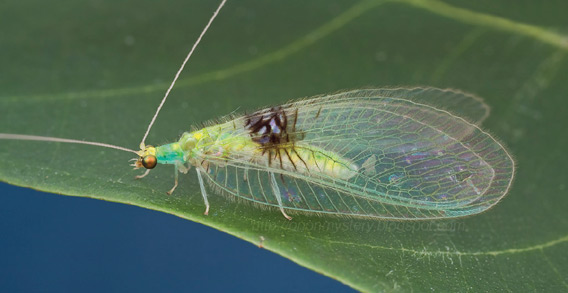
Adult green lacewing (Semachrysa jade sp. n.). Photo by Hock Ping Guek
Scientists have discovered a previously unknown species of lacewing insect after stumbling upon a series of photos posted on Flickr®, according to a paper published in the journal ZooKeys.
The species is named Semachrysa jade and lives in the rainforests of Malaysia.
Shaun Winterton, a researcher with the California State Collection of Arthropods at the California Department of Food & Agriculture, first found evidence of the species when he randomly stumbled upon a set of photos posted by Hock Ping Guek, a Malaysian photographer. Winterton recognized the insect as a potentially new species, but needed to collect field specimen in order to formally describe it. About a year later, an individual was collected at the same site, enabling Winterton and Stephen J. Brooks of the Natural History Museum in London to write up the description in ZooKeys. Hock is a co-author on the paper.
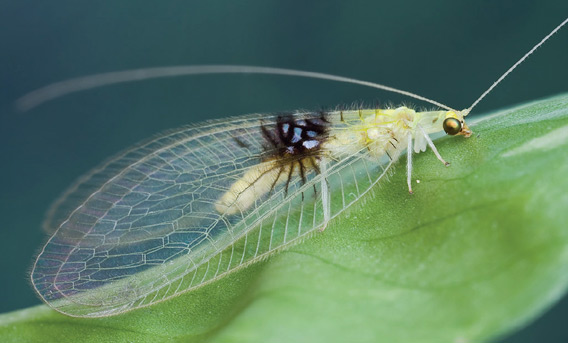
Adult green lacewing (Semachrysa jade). Photo by Hock Ping Guek
Semachrysa jade now officially joins the list of more than 1,200 species of green lacewings found world wide. Lacewings are notable for their feeding habit, which changes dramatically as they age.
“Adults mostly feed on flowers, but the larvae are ferocious predators of other insects, frequently carrying the dead carcasses of their prey on their backs after killing them using their enormous, sucking tube-like jaws,” explained a statement released by Pensoft Publishers.
Thousands of “new” insect species are described by scientists each year.
CITATION: Winterton SL, Guek HP, Brooks SJ (2012) A charismatic new species of green lacewing discovered in Malaysia (Neuroptera, Chrysopidae): the confluence of citizen scientist, online image database and cybertaxonomy. ZooKeys 214: 1–11. doi: 10.3897/zookeys.214.3220
Related articles
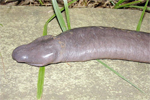
‘Penis snake’ discovered in Brazil is actually a rare species of amphibian
(08/02/2012) A creature discovered by engineers building a dam in the Amazon is a type of caecilian, a limbless amphibian that resembles an earthworm or as some are noting, part of the male anatomy. The animal was discovered while draining a portion of the Madeira River — a major tributary of the Amazon — for a controversial hydroelectric project. Six individuals were found according to biologist Julian Tupan, who identified the species as Atretochoana eiselti. Little else is known about the species, although it is thought to be aquatic and lacks lungs, breathing through its skin instead.
The biggest new species discoveries in 2011
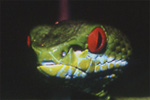
(12/26/2011) Every year scientists describe thousands of species for the first time. 2011 was no different, so here’s a look at some of the significant new species discoveries for the year. New species discoveries are bound to continue as genetic analysis becomes more widespread and scientists conduct surveys of ever more habitats. But species loss also continues, and that is something considerably more difficult to quantify. Cataloging the disappearance of a species is extremely costly — final proof can take years. Nonetheless in 2011 the book was closed on two particularly conspicuous creatures: neither the Vietnamese rhino nor the western black rhino roam the wilds any more.
The dark side of new species discovery
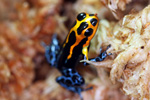
(12/21/2011) Scientists and the public usually rejoice when a new species is discovered. But biologist Bryan Stuart has learned the hard way that the discovery of new species, especially when that species is commercially valuable, has a dark side-one that could potentially wipe out the new species before protections can be put in place. Stuart has discovered 27 species unknown previously to scientists – so far. That includes 22 species of frogs, three types of snakes, and two salamanders. His experience with one of these, a warty salamander from Laos with striking markings (Laotriton laoensis), opened his eyes to a dark side of scientific discovery: commercial overexploitation before protections are in place. Shortly after Stuart described the previously unknown species Paramesotriton laoensis in a scientific paper published in 2002, commercial dealers began collecting this Lao newt for sale into the pet trade. In essence, the dealers used Stuart’s geographic description in the paper as a “roadmap” to find the rare newt.
The world’s tiniest frogs, the size of a Tic Tac, discovered in New Guinea
(12/16/2011) Scientists have discovered the world’s tiniest frogs in Papua New Guinea.
New large horned viper discovered, but biologists keep location quiet
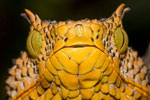
(12/15/2011) In a remote forest fragment in Tanzania, scientists have made a remarkable discovery: a uniquely-colored horned viper extending over two feet long (643 millimeters) that evolved from its closest relative over two million years ago. Unfortunately, however, the new species—named Matilda’s horned viper (Atheris matildae)—survives in a small degraded habitat and is believed to be Critically Endangered. Given its scarcity, its discoverers are working to pre-empt an insidious threat to new species.
Finding new species
(10/21/2010) We are fortunate enough to share our world with an incredible array of wonderful and wild creatures. Yet despite centuries of scientists searching the world over for species and meticulously describing them, we still know surprisingly little about globa biodiversity.
DNA testing finds identical animals actually different species
(04/23/2009) Seemingly identical animals on the outside may in fact be completely different species, according to scientists who have made a startling discovery that could have widespread implications for biology.
Photos: Google Earth used to find new species

(12/22/2008) Scientists have used Google Earth to find a previously unknown trove of biological diversity in Mozambique, reports the Royal Botanic Gardens in Kew. Scouring satellite images via Google Earth for potential conservation sites at elevations of 1600 meters or more, Julian Bayliss a locally-based conservationist, in 2005 spotted a 7,000-hectare tract of forest on Mount Mabu. The scientifically unexplored forest had previously only been known to villagers. Subsequent expeditions in October and November this year turned up hundreds of species of plants and animals, including some that are new to science.